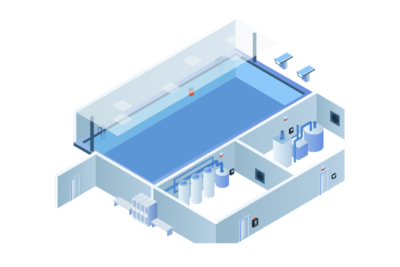Indoor Pools
Continuous monitoring of Chlorine, Ozone and CO2 for indoor swimming pools in recreational facilities or hotels
Indoor swimming pools provide exercise and recreational fun for all ages. In addition to complying with indoor air quality regulations, being able to detect a leak early can reduce costs that could be incurred from escaping gas and excess energy use.
Many facilities use chlorine and ozone to keep the water clean and sparkly. Chlorine is a common disinfectant used for water treatment programs and ozone offers excellent disinfection and oxidation properties. Ozone helps prevent the accumulation of deposits on pipes and increases the comfort of patrons by reducing red eyes, swimsuit fading and other chlorine-related issues. To help ensure the health and safety of patrons and facility maintenance workers, it is important to have a continuous gas detection system to monitor for leaks in the chlorine feed and storage room and the ozone generator room.
CO2 is commonly used to maintain optimum pH levels in the pool water. While CO2 is a natural, non-corrosive gas and in low concentrations is not harmful, in high concentrations it is toxic and it can displace oxygen, causing rapid asphyxiation and death, especially in a confined area like the CO2 gas cylinder storage room.

KEY CONSIDERATIONS
- A life safety system for monitoring gas leaks in chlorine feed and CO2 storage rooms and the ozone generator room
- If chlorination tanks are more than 16 ft (5m) away from the existing sensor, an additional sensor may be required
- Protect sensor from water damage by adding splash guard option to chlorine and ozone gas detectors
TARGET GASES
- Chlorine (Cl2)
- Carbon Dioxide (CO2)
- Ozone (O3)

